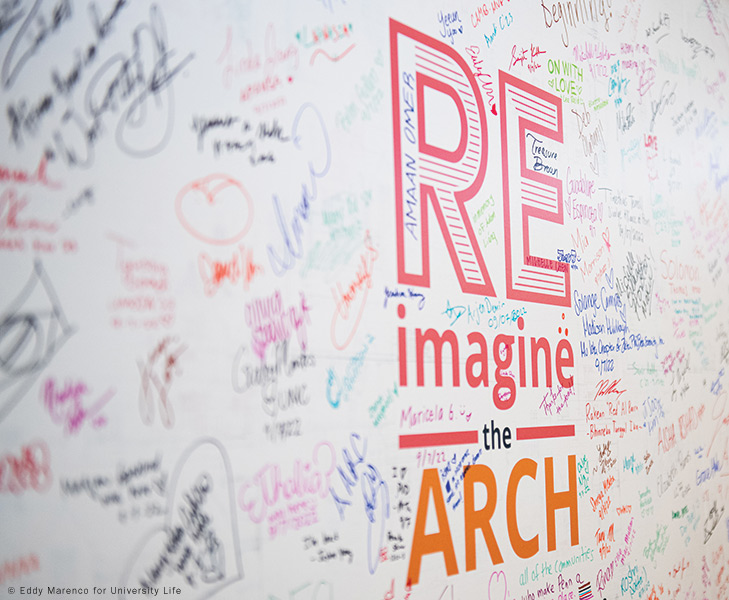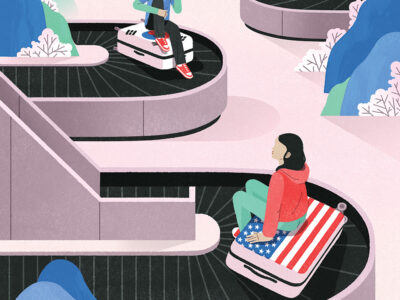
Penn’s cultural centers get more space in the heart of Locust Walk.
Constructed almost 100 years ago, and housing Penn’s Christian Association for decades, the building most recently known as the Arts, Research, and Culture House (ARCH) on 36th Street and Locust Walk has been through several transformations.
On September 7, students and administrators got to see the latest one, filling the ARCH for a grand reopening event to celebrate a remodeled building with more dedicated space for Penn’s cultural resource centers and minority student coalition groups.
Makuu: The Black Cultural Center, La Casa Latina, and the Pan-Asian American Community House had already been located in the ARCH’s basement but shared the building with Penn’s Center for Undergraduate Research and Fellowships (CURF). Following years of student advocacy, those cultural centers will now have full use of the building, which includes event and meeting spaces, offices, and study rooms on the second and third levels that had previously been occupied by CURF, which over the summer was moved to another building just across Locust Walk. Natives at Penn, which has called the Greenfield Intercultural Center home, will also have a visible presence inside the ARCH.
“Students can now envision what it means to utilize a full building,” says Will Atkins, the associate vice provost for diversity, equity, inclusion & belonging for University Life, which is overseeing the renovations. “Now we’re seeing what the opportunities are for students, who are really looking at this as a place that is theirs—their home away from home in a way.”
Brian Peterson EAS’93 GEd’97 Gr’13, the director of Makuu whose office was moved upstairs, has been excited to see students take advantage of the entire building, recalling how La Casa was able to host a big open house early in the semester. “It’s a different level of energy versus everything being quiet all day,” he says.
Recognizing that the remodeled ARCH is something of a compromise since each group would prefer its own building, Peterson admits, “That’s the challenge of an urban campus.” But the next phases of the renovation project will include a feasibility study regarding further expansion into an adjacent building. Also in the works are other aesthetic and physical changes on the ARCH’s first floor, which already saw the removal of a grab-and-go food counter near the entrance.
Laurie Hall, the assistant vice provost for strategic planning and operations for University Life, believes it’s important to integrate students throughout the multiphase project—and suggests that the Gothic Revival architecture of the structure, which underwent a $24.5 million renovation in 2014 [“Gazetteer,” Mar|Apr 2014], adds an extra layer of meaning to the effort.
“We have this historic building that is very prominent on Locust Walk and has been many things, and now we have the students having their input into the aesthetics and the assignments of those spaces inside of it,” Hall says. “The building will always have this nod to Penn history—but also what we can do with the inside of it to evolve with the student population.” —DZ
Alumni are welcome to provide suggestions or feedback, or learn more about the project, at universitylife.upenn.edu/arch-renovation-project.




